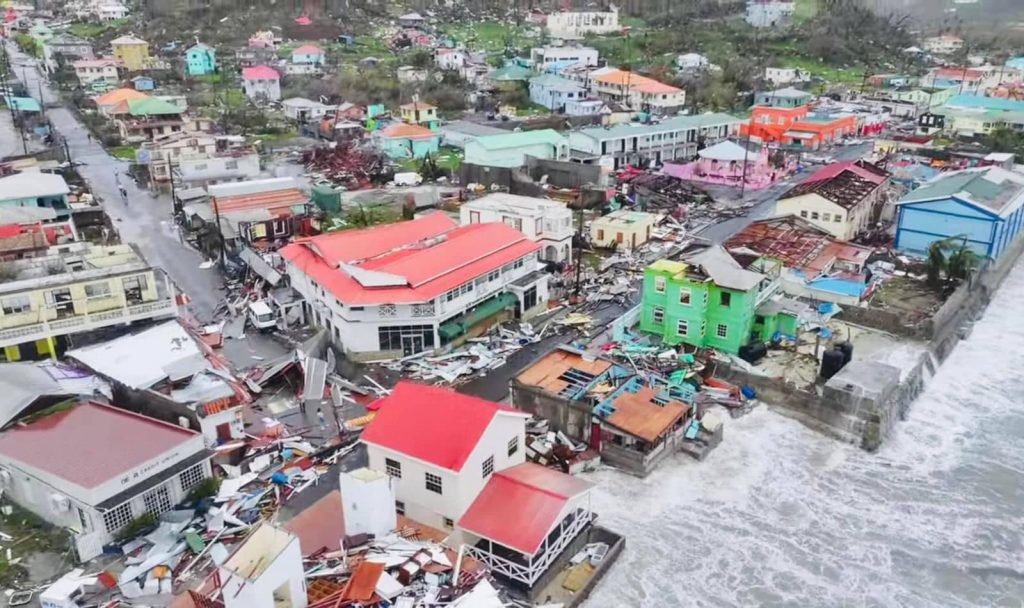Hurricane Beryl, a catastrophic Category 5 storm at the time of this report, is barreling towards Jamaica after leaving a trail of destruction across several Caribbean islands. The hurricane, which has already claimed at least 2 lives, is expected to bring life-threatening winds and storm surge to Jamaica on Wednesday before potentially impacting the Cayman Islands on Thursday.
Beryl’s rapid intensification has shattered records, making it the earliest Category 5 hurricane in the Atlantic and only the second such powerful storm recorded in July. Climate experts attribute this unprecedented strength to abnormally warm ocean temperatures driven by climate change.
The storm’s devastating passage through Grenada on Monday left the island in ruins, with nearly all residents losing power and phone service. Prime Minister Dickon Mitchell reported that the island of Carriacou was “flattened” in just half an hour.
Neighboring St. Vincent and the Grenadines also suffered extensive damage, with Prime Minister Ralph Gonsalves describing a path of “immense destruction, pain, and suffering.” Reports indicate that about 90% of homes on Union Island are damaged or destroyed, while hundreds more buildings, including schools and churches, sustained severe damage across St. Vincent.
Storm surge reached the islands of Saint Lucia and Barbados as well, leaving coastal communities under water. The fishing industry in these islands have suffered a significant blow with several vessels damages and sunk due to storm surge.
As Beryl approaches Jamaica, authorities have issued a hurricane warning for the island.
Residents are bracing for hurricane-force winds, storm surge of up to 5 feet above normal tide levels, and rainfall totals of 4 to 8 inches, with isolated areas potentially receiving up to 12 inches.
The southern coasts of Haiti and the Dominican Republic are under tropical storm warnings, with conditions expected to deteriorate starting Tuesday. Storm surge and heavy rainfall are also anticipated in these areas.
As Hurricane Beryl continues its path through the Caribbean, meteorologists and climate scientists point to its unprecedented strength as a troubling indicator of the impact of climate change on tropical cyclones. The storm’s ability to rapidly intensify so early in the hurricane season has raised concerns about the potential for more frequent and severe storms in the future.

